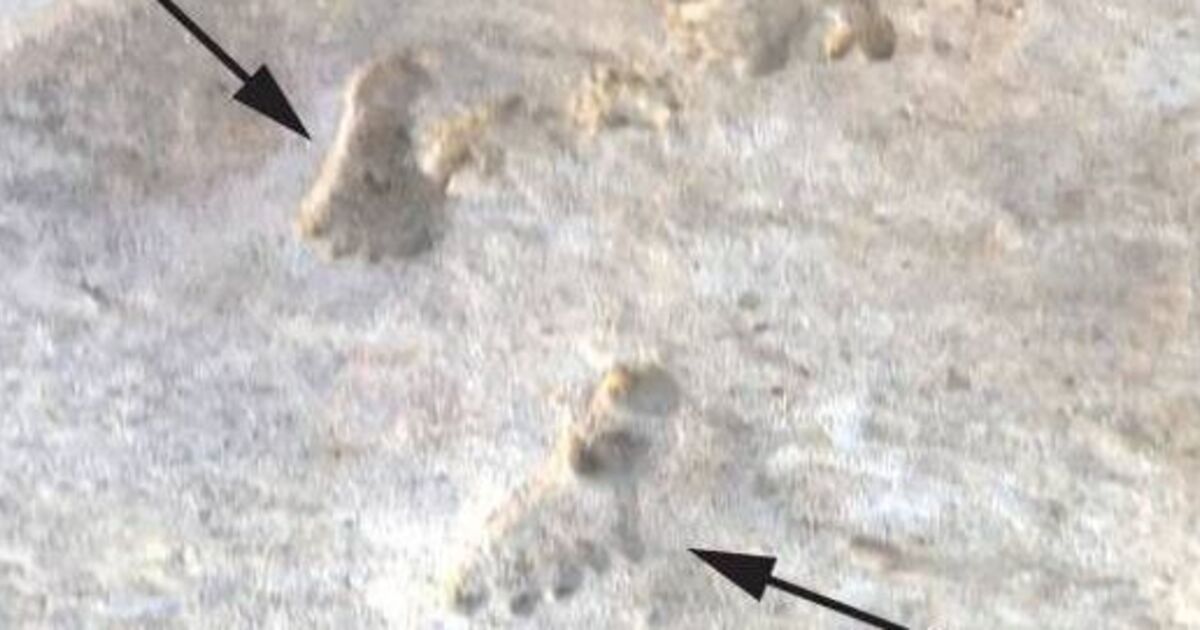

A startling discovery of a distinct footprint in New Mexico is set to revolutionise our understanding of human history. The find suggests that humans may have arrived on the continent thousands of years earlier than previously believed, leaving archaeologists astounded.
The footprints, imprinted into soft gypsum nearly 23,000 years ago, clearly show the shape of human toes, arches, and heels. These early human tracks are found alongside those of mammoths, giant sloths, and other Ice Age creatures at White Sands National Park in New Mexico, painting a vivid picture of a time when humans and megafauna coexisted during the harshest period of the last Ice Age.
Until now, Clovis spearpoints dating back around 13,000 years were considered the earliest evidence of human presence in North America. However, this new research published in Science pushes this timeline back by roughly 10,000 years, prompting a reevaluation of how early explorers survived extreme temperatures, shrinking coastlines, and unknown predators while navigating across a frozen continent.
The dried-up Lake Otero, an Ice Age lake that once covered about 1,600 square miles, left behind layers of mud and sand. Within these layers, 61 human footprints were discovered, some made by adults, others by children who ran, slipped, and retraced their steps across the damp ground.
Radiocarbon tests on tiny Ruppia cirrhosa seeds found within the prints consistently dated between 21,000 and 23,000 years old, reports <a href="https://www.themirror.com/news/science/archaeologists-incredible-ancient-footprints-discovery-1185942" rel="Follow" target="_self">the Mirror US</a>.
"We knew it was going to be controversial," said co-author Kathleen Springer, a geologist with the United States Geological Survey (USGS). Following their initial paper, she recalls thinking, "we knew we had to do more."
To dispel any scepticism about the water plant potentially skewing the dates, the team gathered tens of thousands of pine pollen grains – a terrestrial source unaffected by the hard-water effect – from the same thin layers.
Their results spanned between 22,600 and 23,400 years, in line with the seed ages. Optically stimulated luminescence (OSL) on quartz in the clay above indicated that the sand had been shielded from sunlight for over 21,500 years, again corroborating the other methods.
The ages deduced from both methods "are statistically indistinguishable from our original seed ages," declares co-author Jeffrey Pigati, also a geologist with the USGS.
"The new dates harmonise perfectly with the previous chronology," says Thomas Higham, a radiocarbon-dating expert at the University of Vienna who wasn't involved in the study. "This is crucial and compelling confirmation" of the older ages.
Helen Roberts, a geographer and OSL specialist at Aberystwyth University, said: "They obviously had a tricky set of material here. It's very striking how those ages come together despite those challenges."
Yet, some sceptics cast doubt over the authenticity of the discovery. Geoscientist Joe Davis suggests that natural forces such as wind or water may have jumbled ancient clay with younger shoreline mud, potentially muddling the stratigraphic record.
The research team confidently states their careful excavations show no sign of such mix-ups, and independent labs have corroborated their results, ruling out the presence of any sneaky contaminants.
"The site in New Mexico has rewritten history books as we've discovered wonderful examples of human activity, the way that humans interacted with one another, with the landscape, and with the animal life there," Prof Sally Reynolds of Bournemouth University explained.
Her fellow academic at Bournemouth, Prof Matthew Bennett, enthuses that their work not only validates the earlier findings but also enriches our understanding of how our forebears moved and lived.
He said: "This ancient world was fraught with dangers, including formidable predators like dire wolves and saber-toothed cats. We can see where she slipped in the mud at certain points ... we can also see the child's footprints where she set them down, presumably because she was tired and needed a rest."